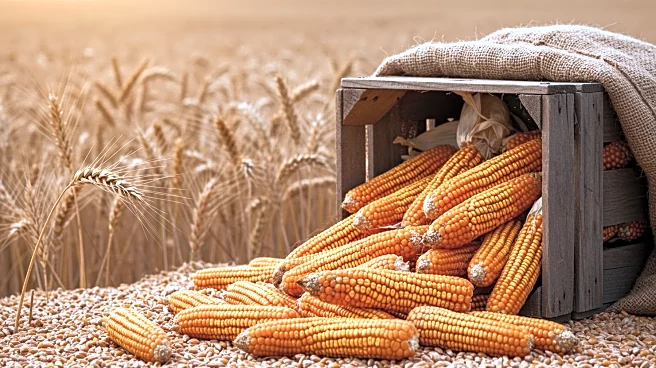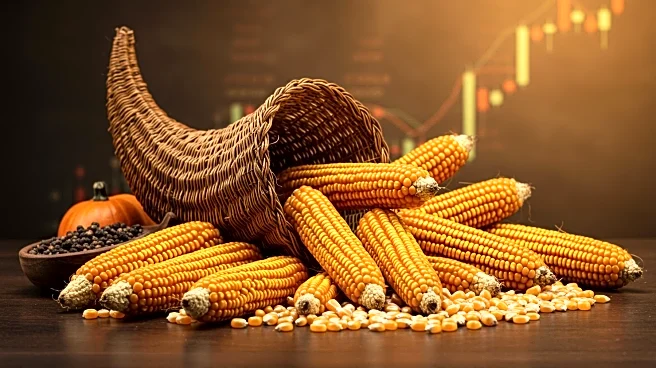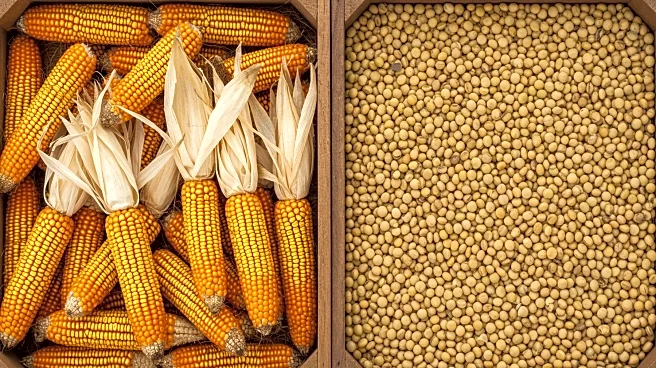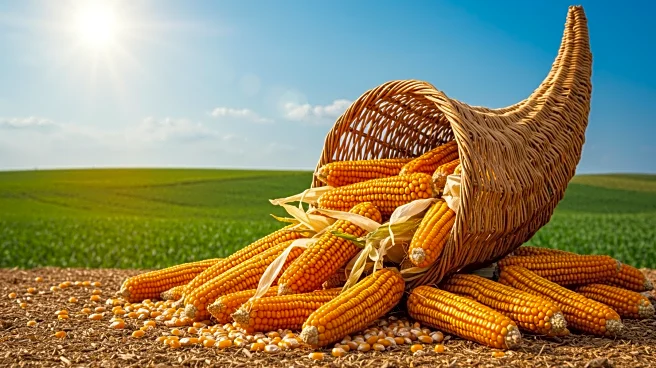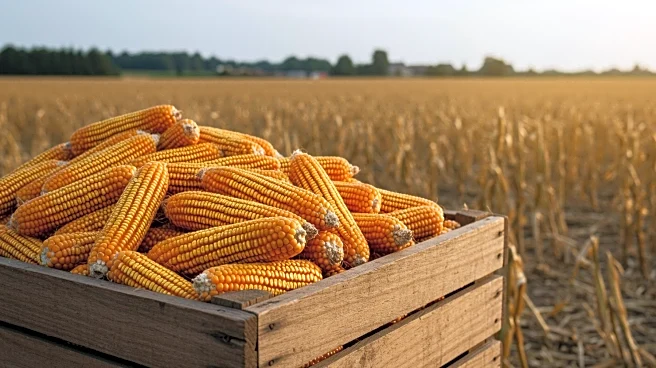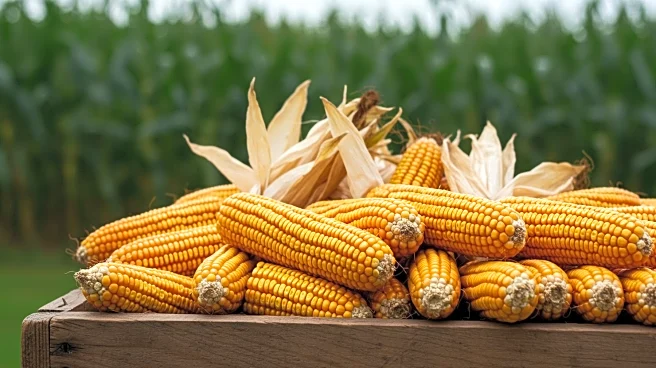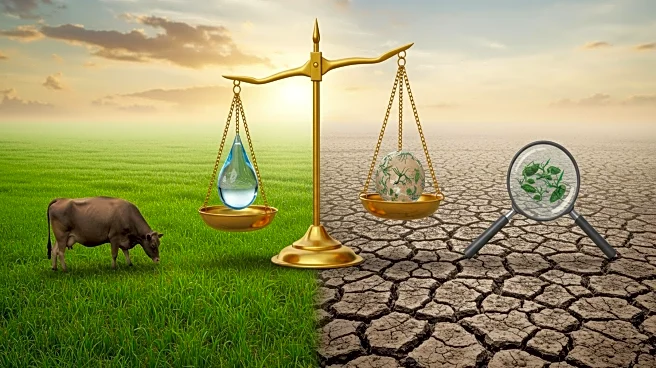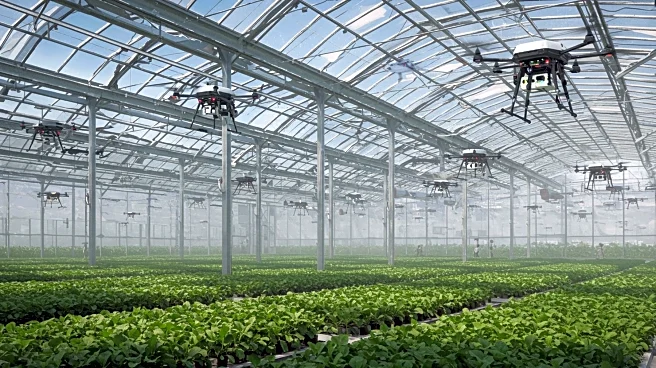What is the story about?
What's Happening?
The August 2025 World Agricultural Supply and Demand Estimates (WASDE) report has projected a record U.S. corn production of 16.7 billion bushels, driven by increased harvested area and a record yield of 188.8 bushels per acre. The report also indicates a tighter U.S. wheat supply, with ending stocks reduced to 869 million bushels, and global wheat stocks at their lowest since the 2015/16 season. Soybean production is forecasted to decrease due to a smaller harvested area, despite higher yields. Additionally, U.S. cotton production is sharply reduced due to drought conditions in the Southwest, leading to increased prices. The report provides mixed outlooks for other commodities, including rice, sugar, livestock, and dairy, reflecting varied supply and price trends.
Why It's Important?
The WASDE report's projections have significant implications for U.S. agriculture and global food security. The record corn output could bolster U.S. exports, impacting global corn markets and potentially lowering prices. Conversely, the reduced wheat stocks may lead to increased prices, affecting global food supply chains. The decrease in soybean production could influence the oilseed market, affecting both domestic and international trade. The sharp reduction in cotton production highlights the vulnerability of agriculture to climate conditions, which could lead to increased costs for textile industries. These developments are crucial for stakeholders in agriculture, trade, and food industries, as they navigate supply chain adjustments and pricing strategies.
What's Next?
Stakeholders in the agricultural sector will likely respond to these projections by adjusting their strategies. Farmers may alter planting decisions based on expected profitability, while traders and exporters might shift focus to capitalize on favorable market conditions for corn. The reduced wheat and soybean stocks could prompt increased imports or alternative sourcing strategies. Additionally, the cotton industry may seek solutions to mitigate the impact of drought conditions, potentially exploring more resilient crop varieties or irrigation technologies. Policymakers may also consider interventions to support affected industries and ensure food security.
Beyond the Headlines
The WASDE report underscores the broader challenges facing global agriculture, including climate change and resource management. The impact of drought on cotton production highlights the need for sustainable agricultural practices and climate adaptation strategies. Furthermore, the fluctuations in commodity stocks and prices may influence geopolitical relations, as countries adjust trade policies to secure food supplies. These dynamics could lead to long-term shifts in agricultural practices and international trade agreements, emphasizing the importance of resilience and sustainability in food production.
AI Generated Content
Do you find this article useful?
